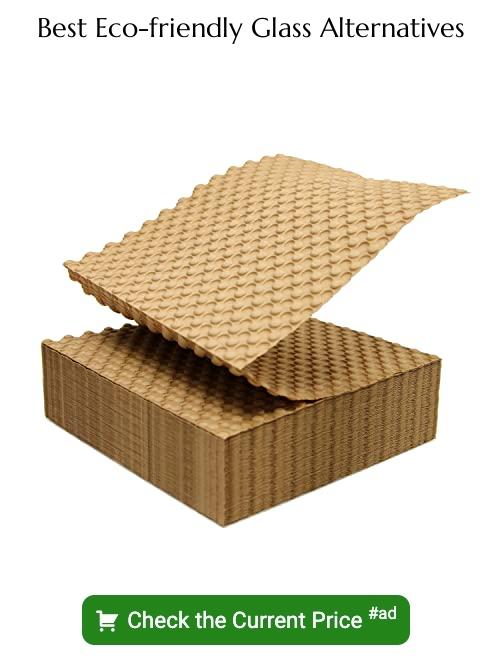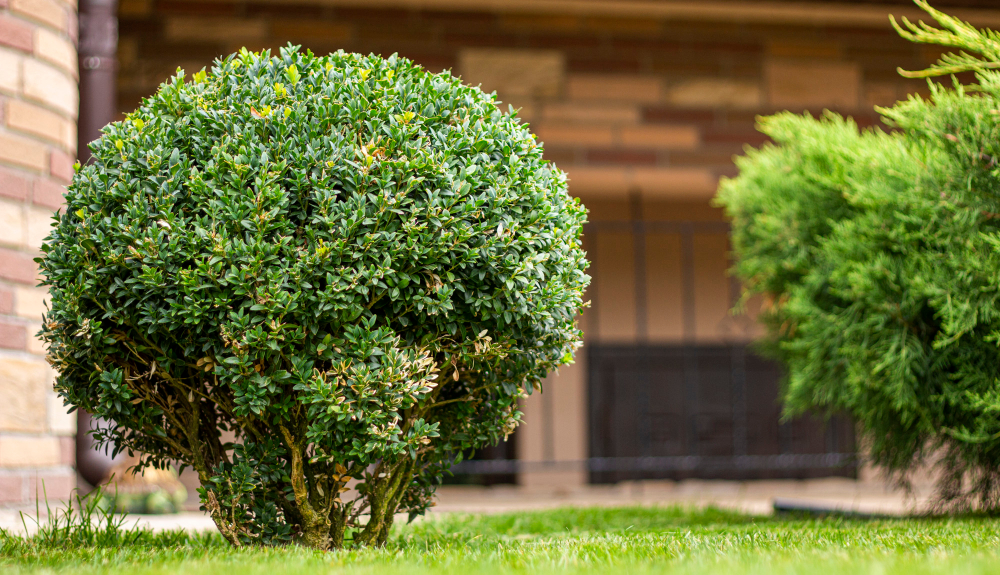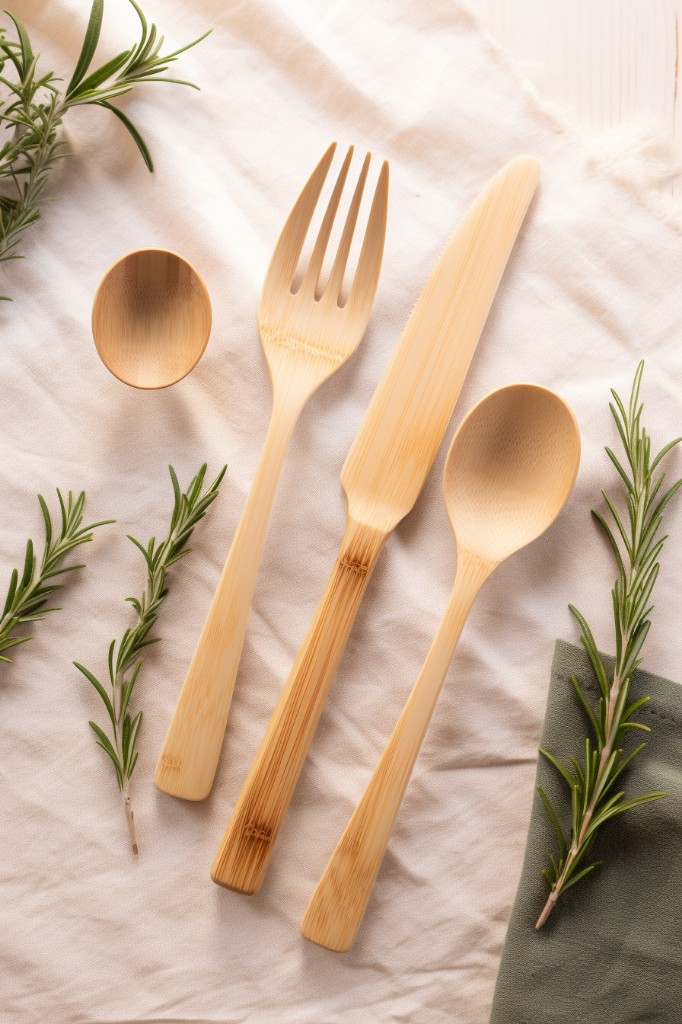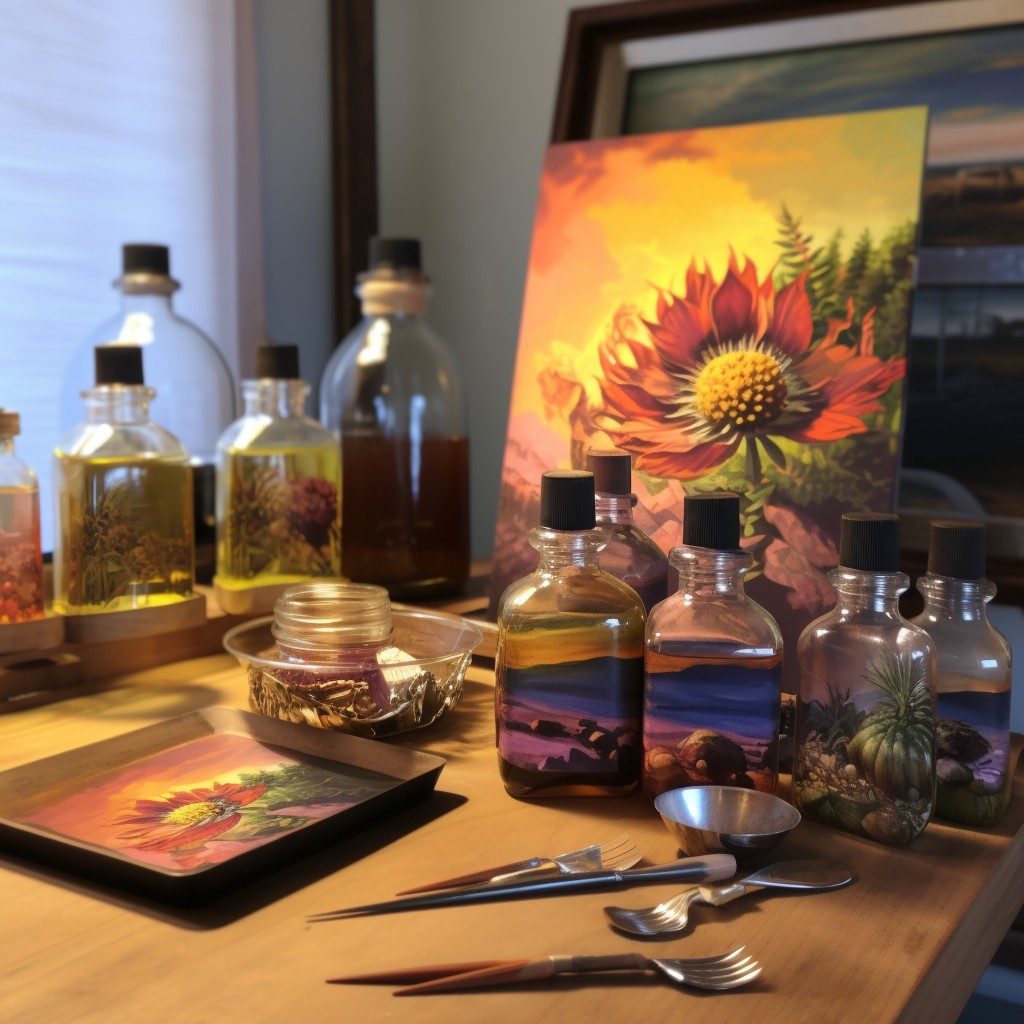Last updated on
Discover the world of eco-friendly and innovative glass alternatives as we delve into their benefits, applications, and how they can revolutionize your everyday life.
Welcome to my latest blog post, where I’ll be discussing a topic that every home decorator and DIY enthusiast is sure to find intriguing: glass alternatives. Glass is a popular choice for many decor items, from mirrors and picture frames to vases and candle holders.
However, it can also be quite expensive and fragile. That’s why I’ve done some research to find some great alternatives that are just as beautiful but won’t break the bank or shatter into a million pieces if dropped.
So grab your favorite beverage, sit back, and let’s explore some creative ways to incorporate glass alternatives into your home decor!
Why Choose Glass Alternatives

There are several reasons why you might choose to use a glass substitute instead of traditional glass in your home decor or products. For one thing, many glass substitutes offer improved durability and resistance to breakage compared to regular glass.
This makes them ideal for items that will be handled frequently or used in high-traffic areas.
Another reason why you might opt for a glass alternative is cost-effectiveness. Traditional glass can be quite expensive, especially if you’re looking for custom shapes or sizes.
Glass substitutes like acrylic and polycarbonate can often be produced at a lower cost while still maintaining the same level of clarity as real glass.
Environmental considerations also play an important role in the growing popularity of eco-friendly materials like ceramic and wooden glasses as well as recyclable plastic alternatives such as PETG (Polyethylene Terephthalate Glycol) which is made from recycled water bottles.
Some people simply prefer the look of certain types of alternative glasses over traditional ones – whether it’s because they have unique textures or colors that aren’t available with regular clear-glass options.
Types of Plastic Glass Substitutes
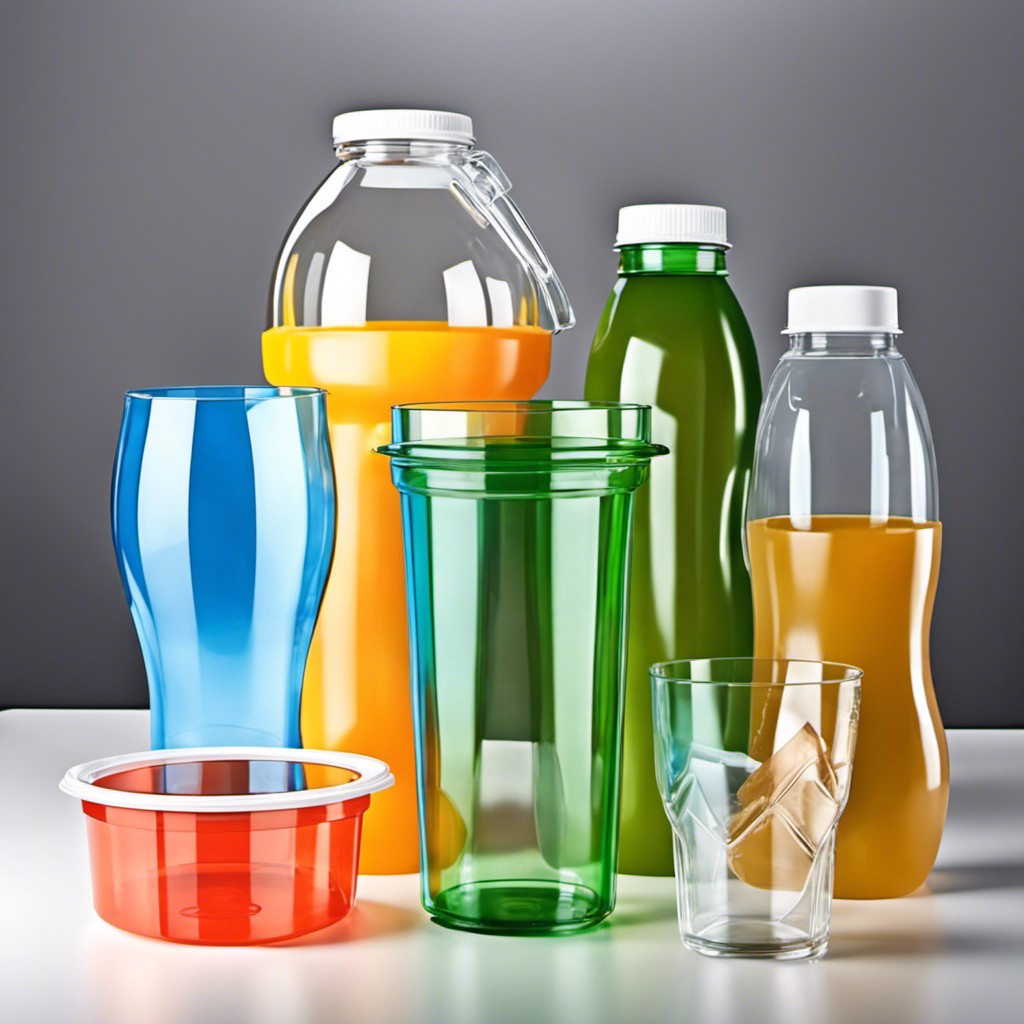
Plastic substitutes for glass are lightweight, durable and affordable. There are several types of plastic that can be used as a substitute for traditional glass.
Acrylic is a type of thermoplastic that has been around since the 1930s. It’s often referred to as plexiglass or lucite and is commonly used in place of traditional glass due to its clarity and shatter-resistant properties.
Polycarbonate is another type of plastic that’s frequently utilized instead of regular window panes or safety glasses because it’s virtually unbreakable while still being transparent.
PET (polyethylene terephthalate) plastics have become increasingly popular in recent years due to their recyclability, durability, transparency and low cost which makes them ideal for food packaging applications such as water bottles.
Acrylic Glass: Pros and Cons
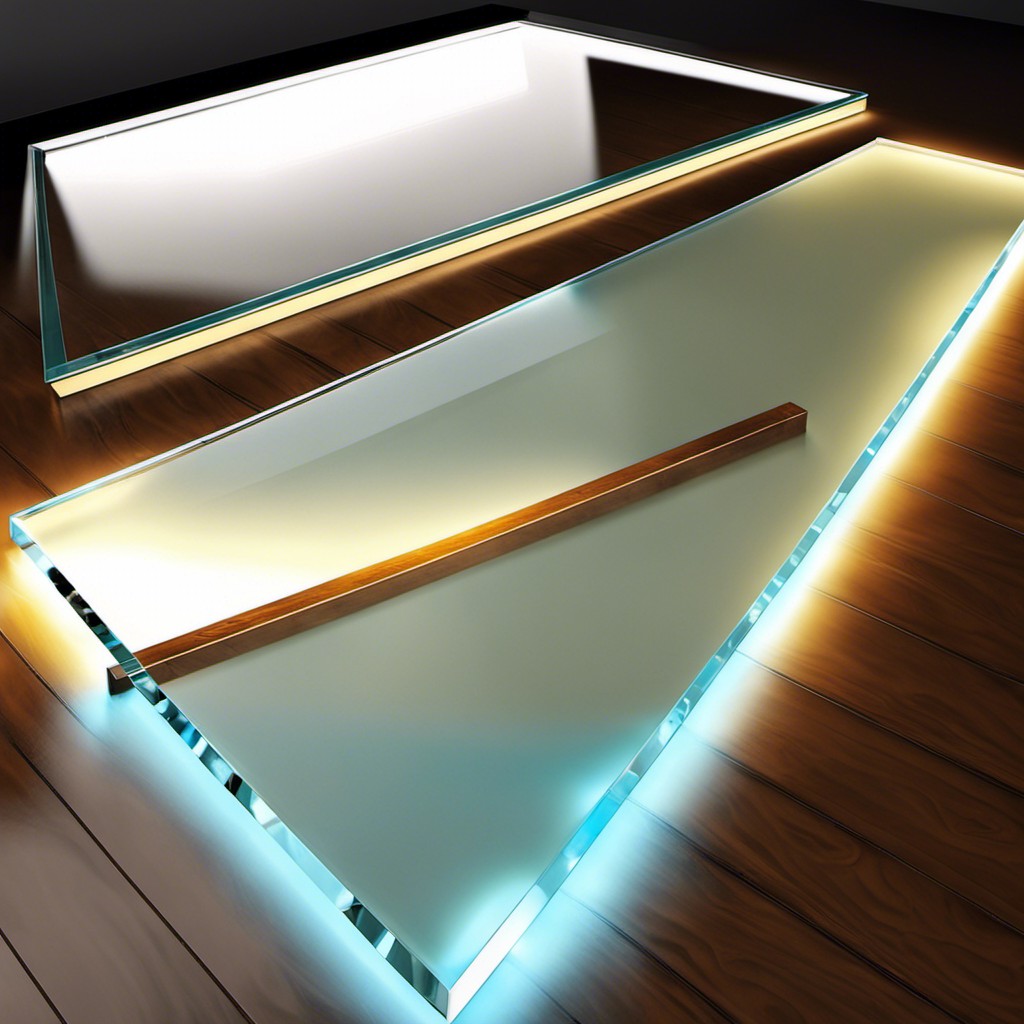
It’s made from a thermoplastic material that can be molded into various shapes and sizes. One of the biggest advantages of acrylic glass is its shatter-resistant properties, making it an ideal choice for high-traffic areas or homes with children and pets.
Another benefit of using acrylic glass in your home decor projects is that it’s lightweight compared to traditional glass. This makes it easier to handle during installation while reducing the risk of breakage during transportation.
However, there are some downsides to consider when choosing this type of plastic substitute for your project needs. Acrylic has lower scratch resistance than regular tempered or laminated safety glasses which means they may not last as long if exposed frequently over time.
Prolonged exposure to sunlight can cause yellowing on the surface which could affect their clarity over time.
Polycarbonate Glass Substitutes
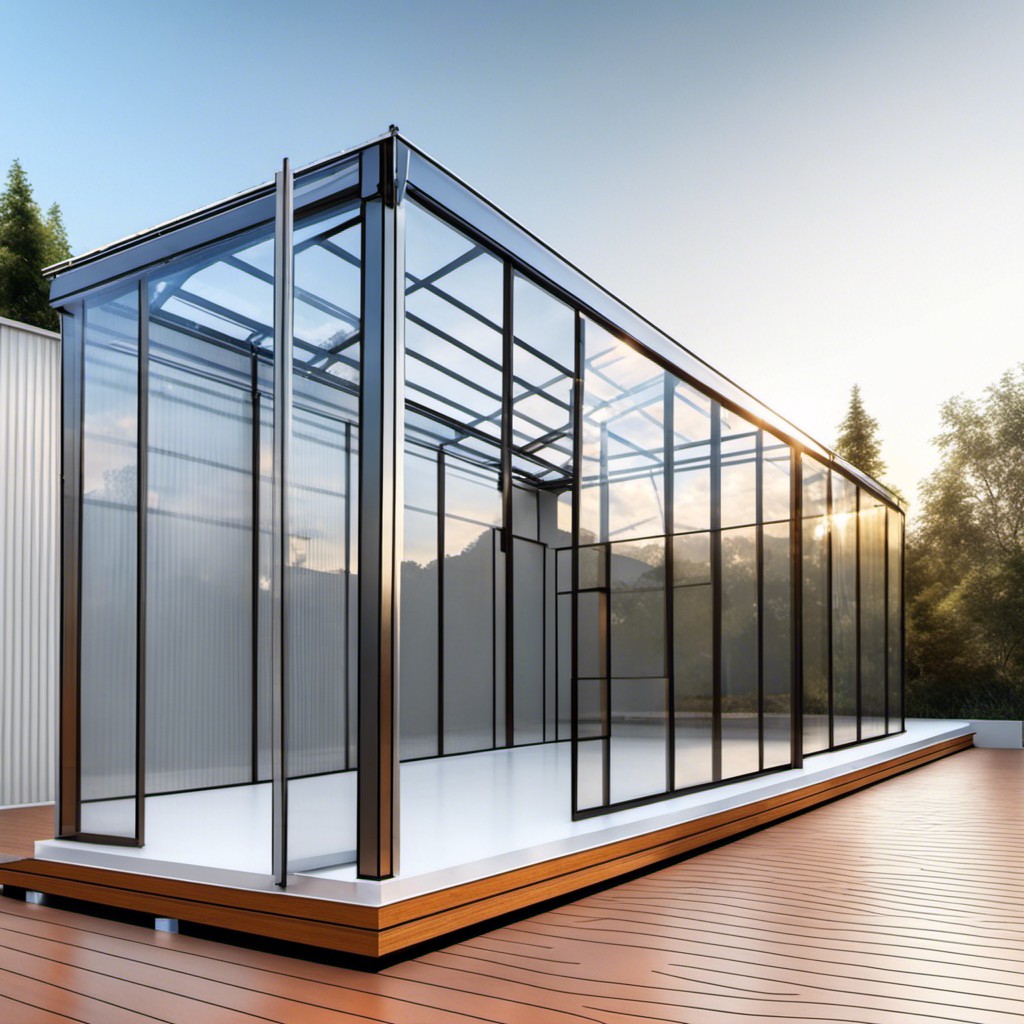
It’s lightweight, shatter-resistant, and can be easily molded into various shapes and sizes. Polycarbonate is also known for its high impact resistance, making it an ideal choice for applications where safety is paramount.
One of the most significant advantages of polycarbonate over traditional glass is its ability to withstand extreme temperatures without cracking or breaking. This makes it an excellent option for outdoor use in areas with harsh weather conditions.
Another benefit of polycarbonate substitutes over traditional glass alternatives like acrylics or ceramics lies in their durability and longevity. They are resistant to scratches, UV rays from sunlight exposure which means they won’t yellow or fade quickly like other materials do.
In addition to being used as a replacement material for windows and skylights in homes and commercial buildings alike; polycarbonates have found their way into many industries such as automotive manufacturing (headlights), aerospace engineering (cockpit windows), medical equipment production (dental retainers) among others due to their versatility.
Ceramic Glass Alternatives
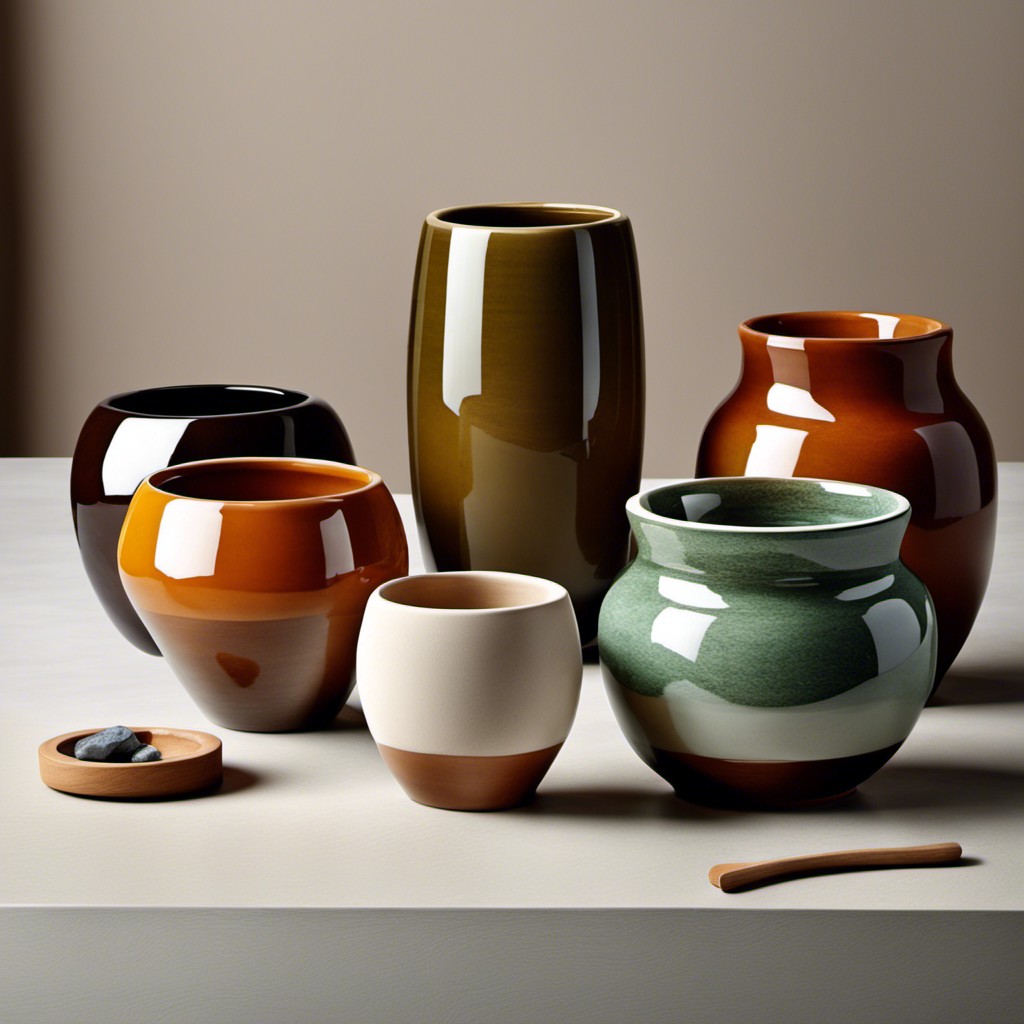
Ceramic glass is made by fusing together various types of clay at high temperatures to create a hard, non-porous material that can withstand extreme heat and pressure.
One of the main advantages of ceramic glass over traditional glass is its resistance to thermal shock. This means it won’t crack or shatter when exposed to sudden changes in temperature, making it ideal for use in cookware such as baking dishes and casserole dishes.
Ceramic glasses are also available in different colors and patterns which make them an excellent option for decorative purposes like vases or candle holders. They are easy to clean with soap water without any fear of scratches on their surface.
Metal Glass Alternatives
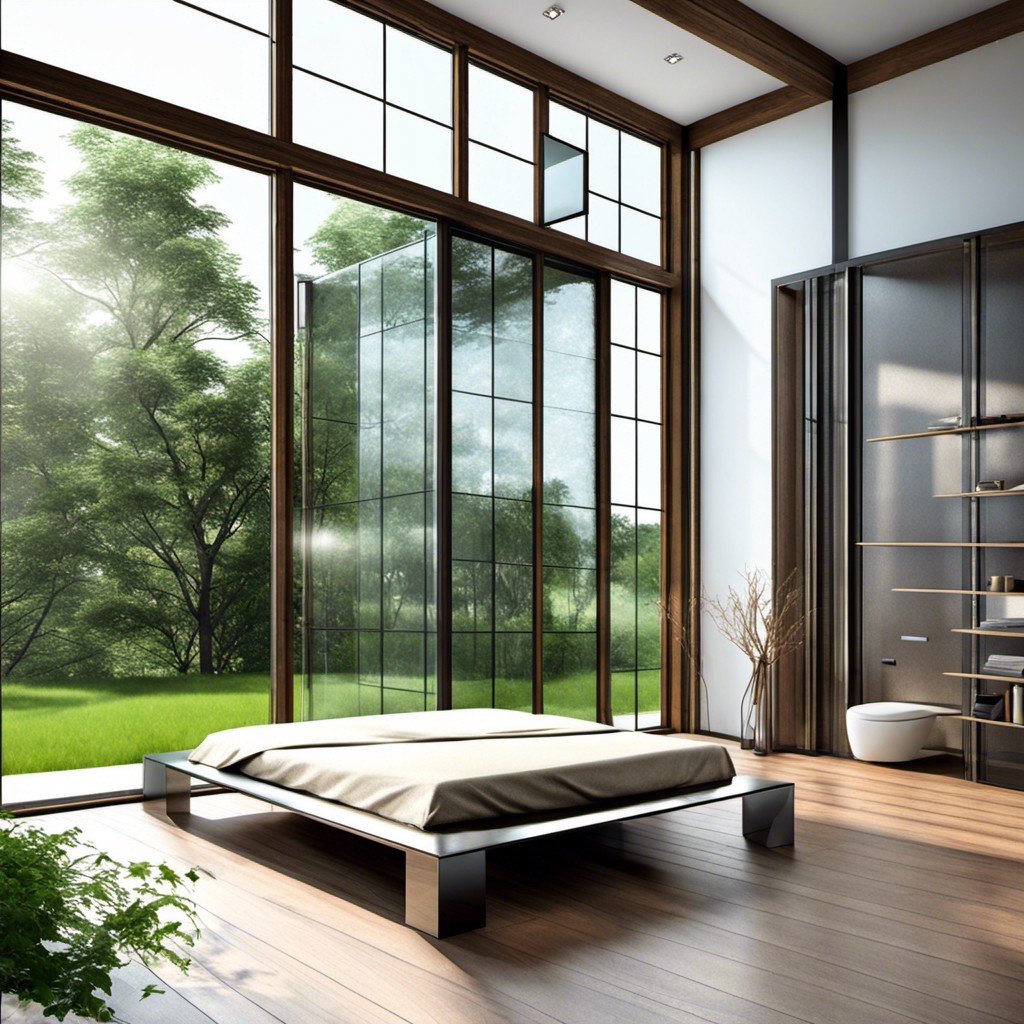
Metal is durable and can withstand high temperatures, making it an excellent choice for cookware and bakeware. Stainless steel is a popular option that’s easy to clean and doesn’t rust or corrode easily.
For decorative purposes, copper has become increasingly popular in recent years due to its warm tones and unique texture. It’s also highly malleable, which means it can be shaped into intricate designs.
Another metal alternative gaining popularity in home decor is aluminum glass substitutes. They are lightweight yet sturdy enough to hold up against everyday use.
Wooden Glass Replacements
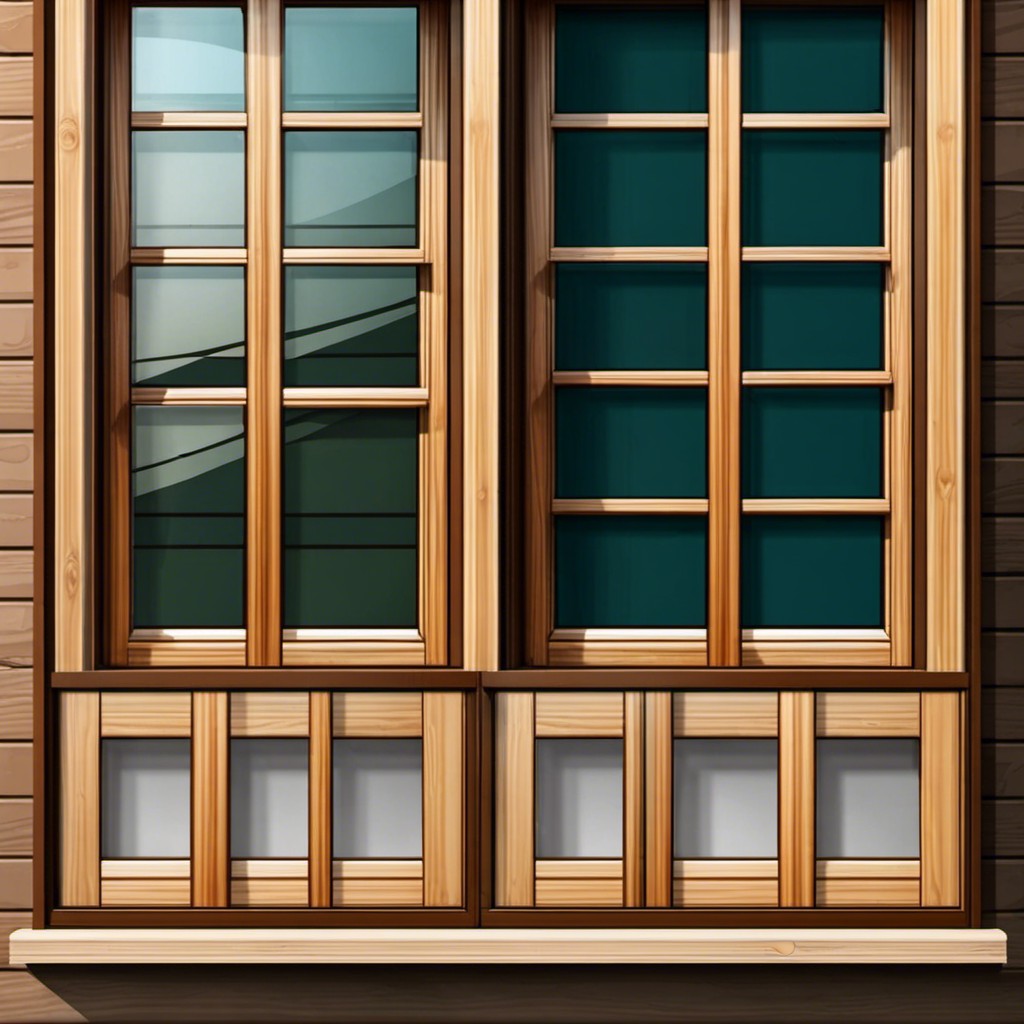
These substitutes are made from various types of wood, including bamboo and birch plywood. They offer a natural look that can add warmth and texture to your decor.
One of the benefits of wooden glass alternatives is their durability. Unlike traditional glass, they won’t shatter if dropped or hit with force.
They are lightweight yet sturdy enough to withstand everyday use.
Another advantage is that these substitutes can be customized in terms of color and finish to match your existing decor or create a new look altogether. Plus, using wood as an alternative material reduces waste by repurposing materials that would otherwise go unused.
While wooden glasses have many advantages over traditional ones when it comes to aesthetics and sustainability factors; however one should keep in mind their limitations such as being less transparent than regular glasses which might not work well for certain applications like windows where transparency is essential.
Corning Gorilla Glass
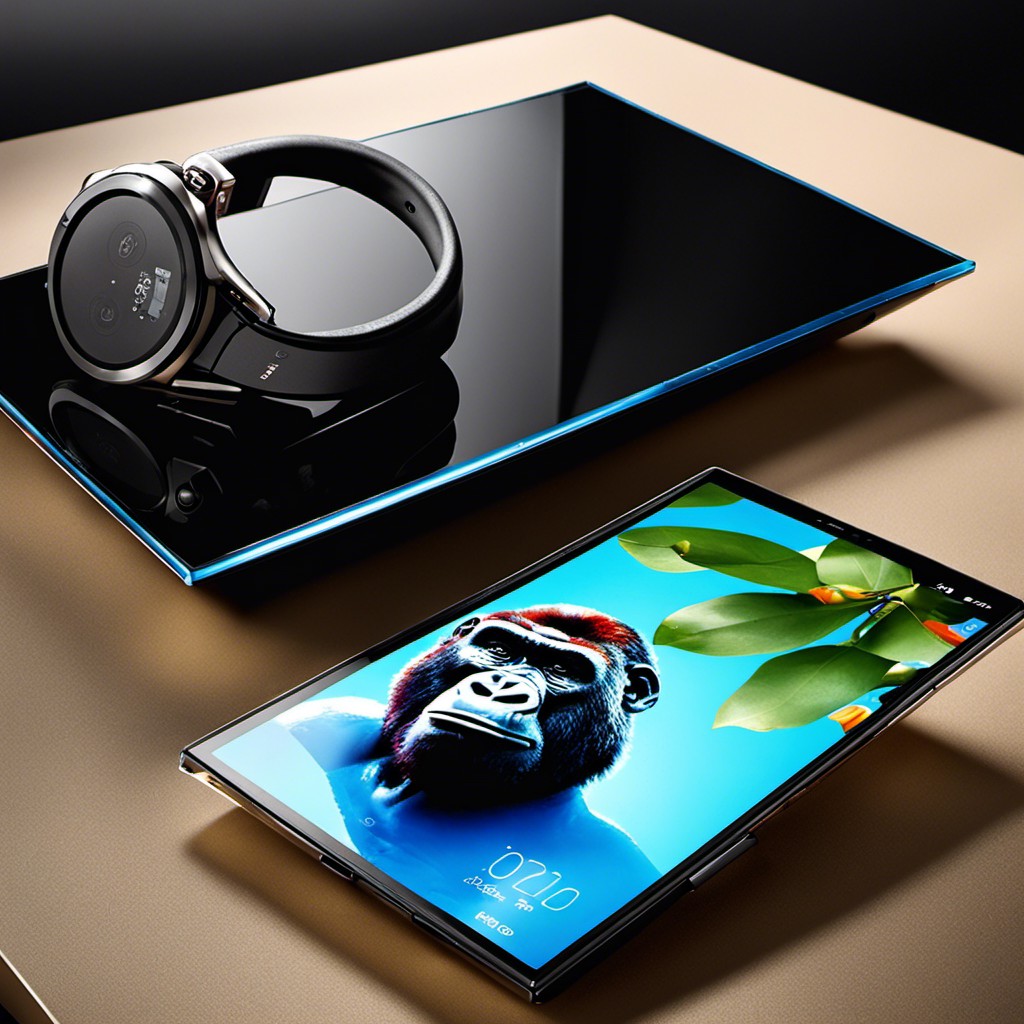
It’s known for its durability and scratch-resistant properties, making it an excellent choice for smartphones, tablets, and other electronic devices. This innovative material is made by Corning Inc., a company that has been producing glass products since the 1850s.
Gorilla Glass was first introduced in 2007 and quickly became the go-to choice for smartphone manufacturers such as Apple and Samsung. The latest version of Gorilla Glass can withstand drops from up to six feet without cracking or shattering.
But Corning isn’t stopping there – they’re constantly innovating with new versions of their popular product. In fact, they recently announced Gorilla Glass Victus which promises to be even more durable than previous versions while maintaining optical clarity.
Glass Alternatives in Construction

Glass is a popular material used in buildings, especially for windows, doors, and skylights. However, glass can be expensive and fragile which makes it less desirable for some applications.
Fortunately, there are several glass alternative materials that can be used in construction without compromising on aesthetics or functionality. For instance, polycarbonate sheets offer excellent insulation properties while being lightweight and shatter-resistant compared to traditional glass panes.
Another option is acrylic sheets which provide high clarity levels similar to those of regular glass but with better impact resistance making them ideal for use as safety glazing panels.
Ceramic glasses are another innovative alternative that offers superior thermal insulation properties making them perfect for energy-efficient building designs. They also come in various colors allowing architects more design flexibility when creating unique structures.
Automotive Industry Applications
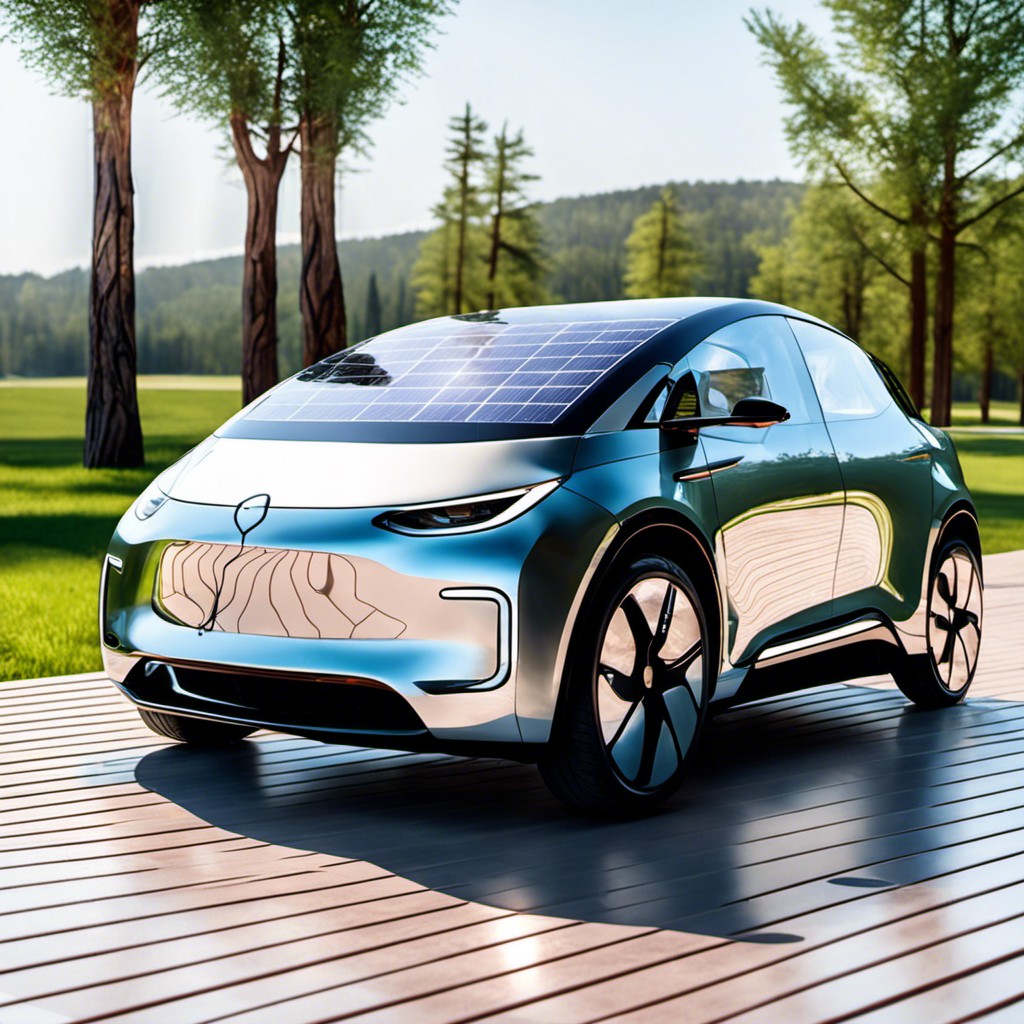
Glass alternatives have become increasingly popular in this industry due to their durability, strength, and lightweight properties. Polycarbonate glass substitutes are commonly used for car windows as they offer excellent impact resistance while being much lighter than traditional glass.
In addition to polycarbonate substitutes for windows, other innovative materials such as Corning Gorilla Glass are being tested for use in windshields. This type of material is known for its exceptional strength and clarity which can enhance visibility while driving.
Moreover, some manufacturers have started using recycled plastic bottles or ocean plastics to create interior components like dashboards or door panels instead of traditional leather or vinyl options.
Glass Alternatives in Food Packaging
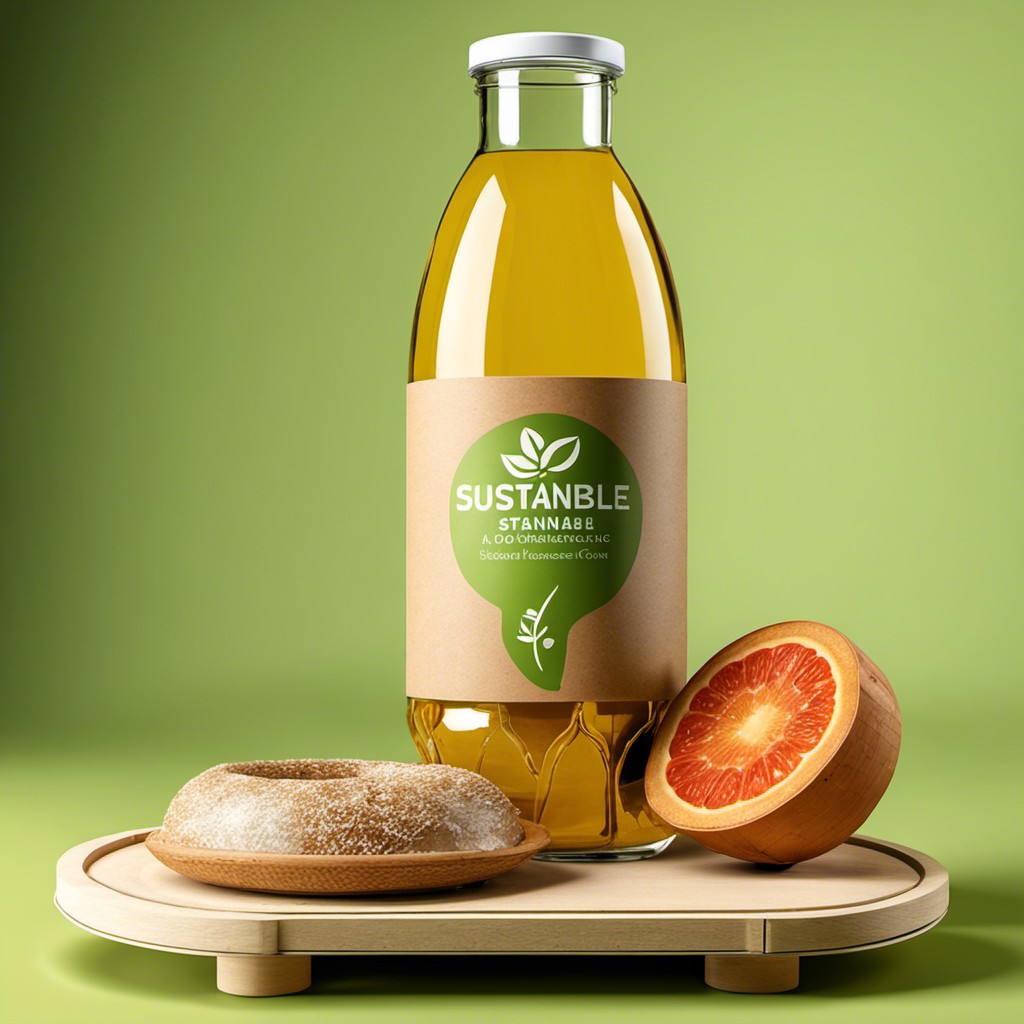
However, glass can be heavy and breakable which makes it less practical for certain applications such as travel or outdoor events. Fortunately, there are several alternatives that offer similar benefits without the drawbacks.
One option is plastic containers made from polyethylene terephthalate (PET), which is lightweight and shatterproof. PET containers are commonly used for beverages like water bottles but they can also be used for food items such as salads or sandwiches.
Another alternative is biodegradable packaging made from materials like cornstarch or sugarcane pulp. These materials decompose naturally over time making them an eco-friendly choice.
Metal cans have been a staple in the food industry since their invention in 1810 by Peter Durand. They provide excellent protection against light and air while being durable enough to withstand transportation without breaking.
Environmental Considerations
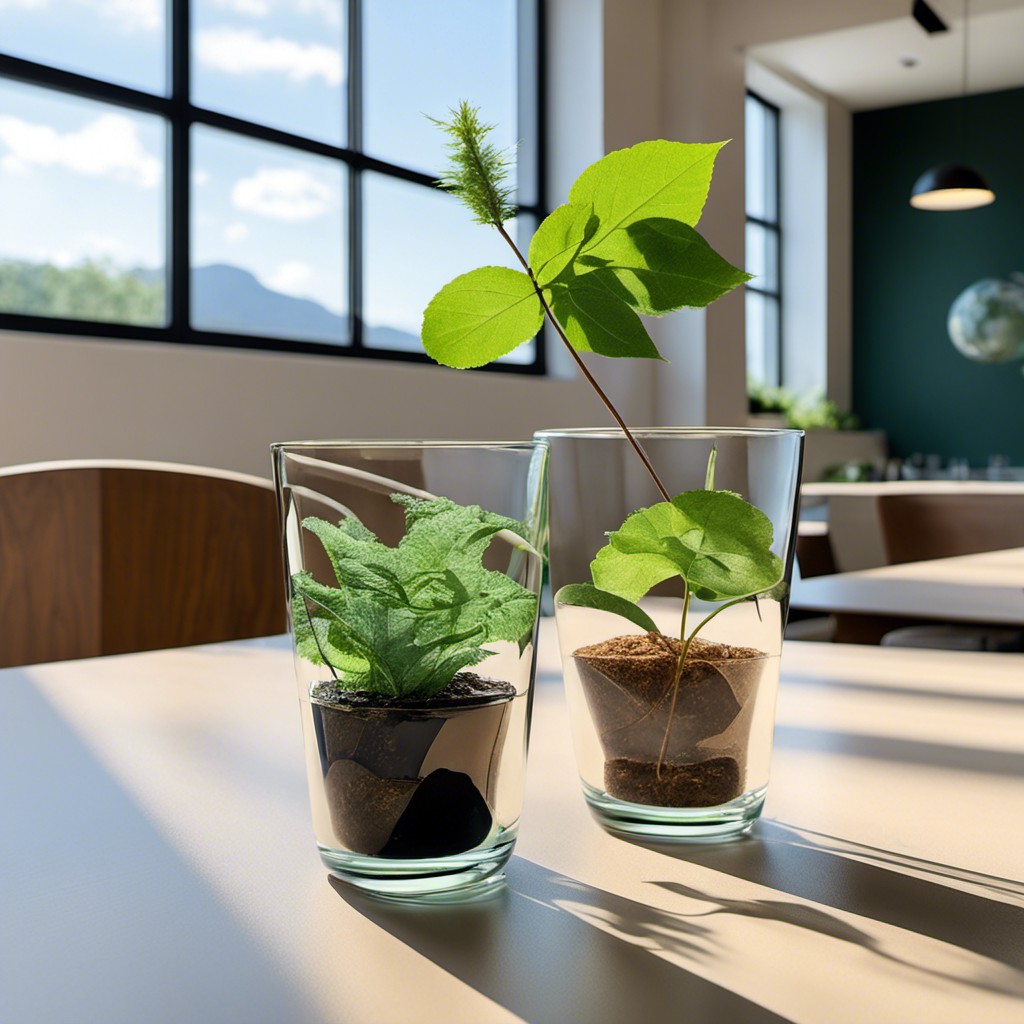
However, as responsible citizens of the planet, we must also consider the environmental impact of our choices. Glass alternatives offer a range of eco-friendly options that can help reduce waste and promote sustainability.
Many glass substitutes are made from recycled materials or are recyclable themselves. For example, some plastic glass substitutes like PETG (polyethylene terephthalate glycol) can be easily recycled into new products after use.
Ceramic glass alternatives like porcelain or stoneware are made from natural clay materials that do not harm the environment during production.
In addition to being recyclable or biodegradable, many glass replacements require less energy to produce than traditional glass products. This means fewer greenhouse gas emissions and a smaller carbon footprint overall.
Sustainable Glass Alternatives

That’s why I was excited to discover that there are many sustainable glass alternatives available in the market today. These substitutes offer all of the beauty and functionality of glass while being kinder to our planet.
One such alternative is recycled glass, which can be used in place of traditional sand-based glasses. Recycled glass is made from post-consumer waste like bottles or jars that have been crushed into small pieces and melted down into new shapes.
Another option is bio-glass, which uses natural materials like ash or seashells instead of sand as its base material. This type of substitute has a lower carbon footprint than regular soda-lime glasses since it doesn’t require high-temperature furnaces during production.
There are also plant-based plastics made from renewable resources such as cornstarch or sugarcane that can be molded into various shapes similar to those traditionally made with plastic but without any harmful environmental impact.
Recyclable Glass Substitutes
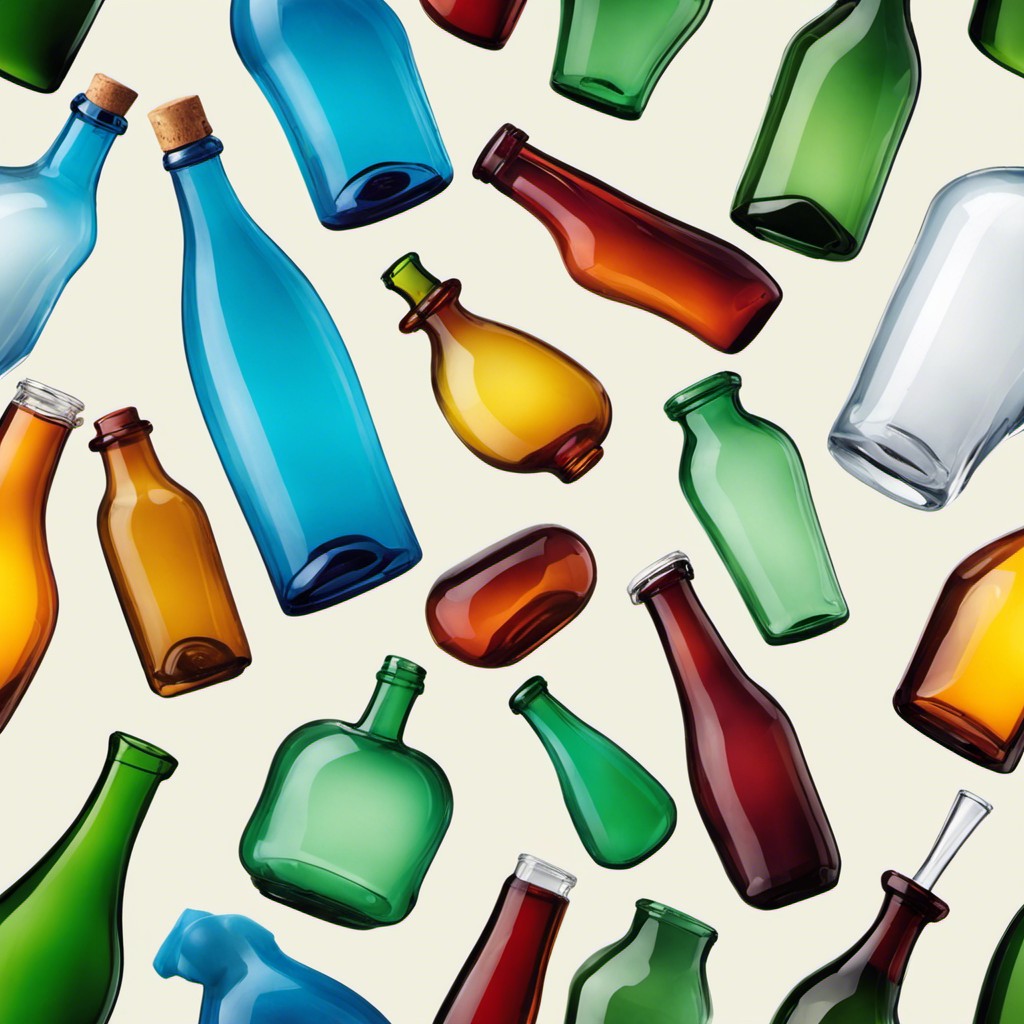
One way to do this is by choosing recyclable glass substitutes for your home decor and packaging needs. These alternatives are made from materials that can be recycled or repurposed, reducing waste and conserving resources.
Some popular options include polycarbonate plastic, which is highly durable and shatter-resistant while still being lightweight enough for easy handling. Another option is ceramic glass, which has a similar look and feel as traditional glass but without the fragility.
When selecting a recyclable substitute for your needs, make sure you check with local recycling facilities to ensure they accept these materials in their programs.
Health Impacts of Glass Alternatives
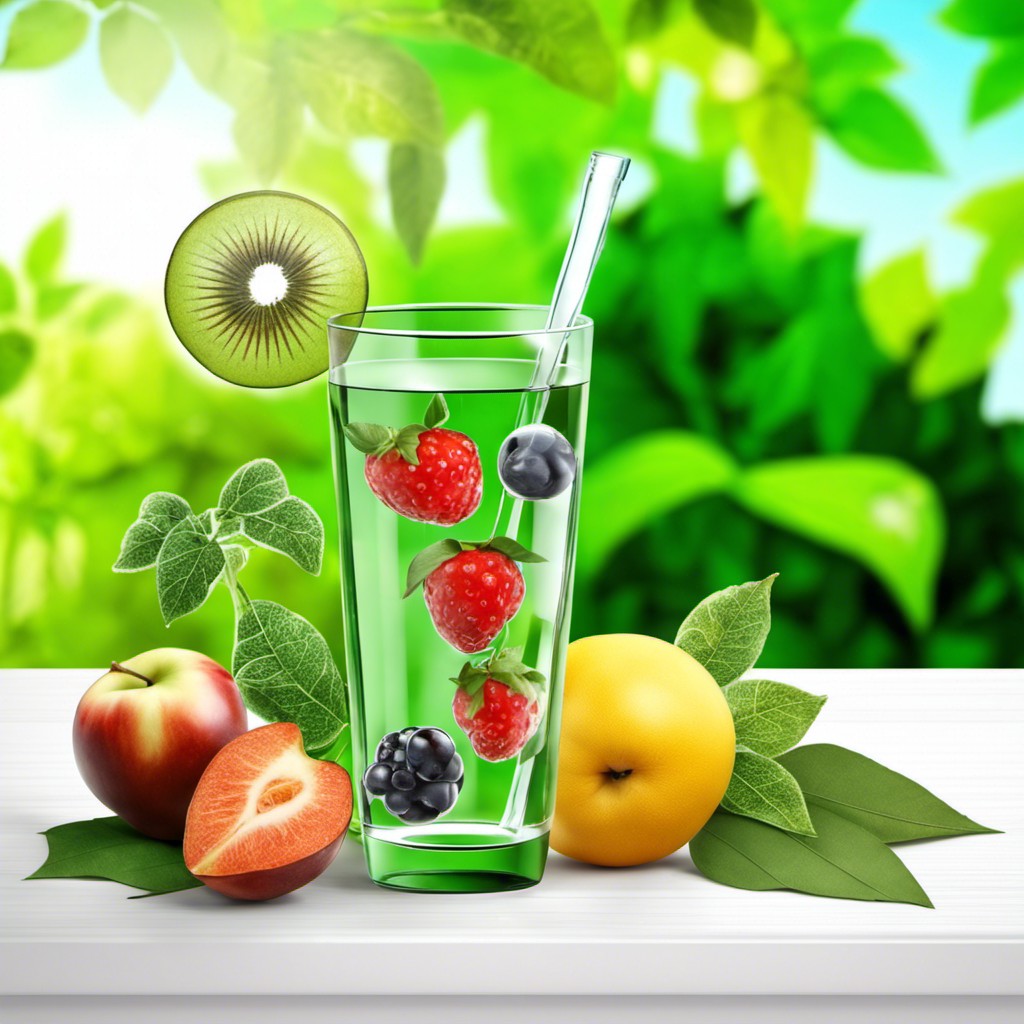
However, it’s important to consider the health impacts of our choices as well. Glass alternatives can have varying effects on human health depending on their composition and intended use.
For example, some plastic glass substitutes contain harmful chemicals such as bisphenol A (BPA) or phthalates that can leach into food or drink when heated or exposed to acidic substances. These chemicals have been linked to various health issues including hormonal imbalances and reproductive problems.
On the other hand, ceramic glass alternatives are generally considered safe for food contact but may pose a risk if they contain lead-based glazes. Metal glasses also offer a safer option but may not be suitable for hot beverages due to their high thermal conductivity.
It’s essential always to research any potential risks associated with your chosen glass alternative before making a purchase decision.
Strength and Clarity Improvement
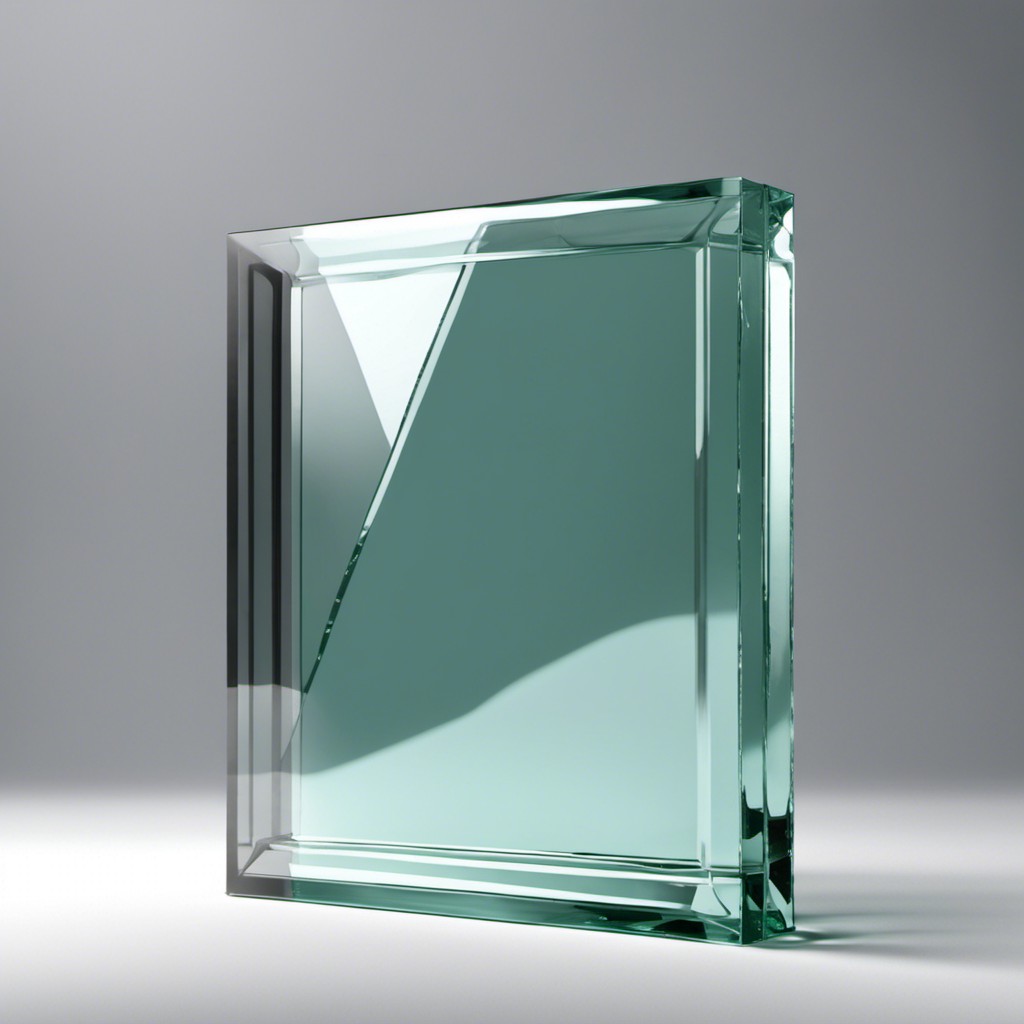
Fortunately, many of the materials used as substitutes for traditional glass offer significant improvements in both areas.
For example, polycarbonate is an incredibly strong plastic that is often used in place of glass due to its impact resistance. It’s commonly found in items such as safety glasses and bulletproof windows because it can withstand high levels of force without cracking or breaking.
Acrylic is another popular choice for those looking for a clear alternative to traditional glass. While not quite as strong as polycarbonate, acrylic still offers impressive durability while also being lightweight and easy to work with.
In addition to these options, there are also newer materials on the market that have been specifically designed with improved strength and clarity in mind. These include products like Gorilla Glass from Corning which has become increasingly popular due its scratch-resistant surface and ability to withstand drops without shattering into pieces.
Cost-Effective Glass Substitutes
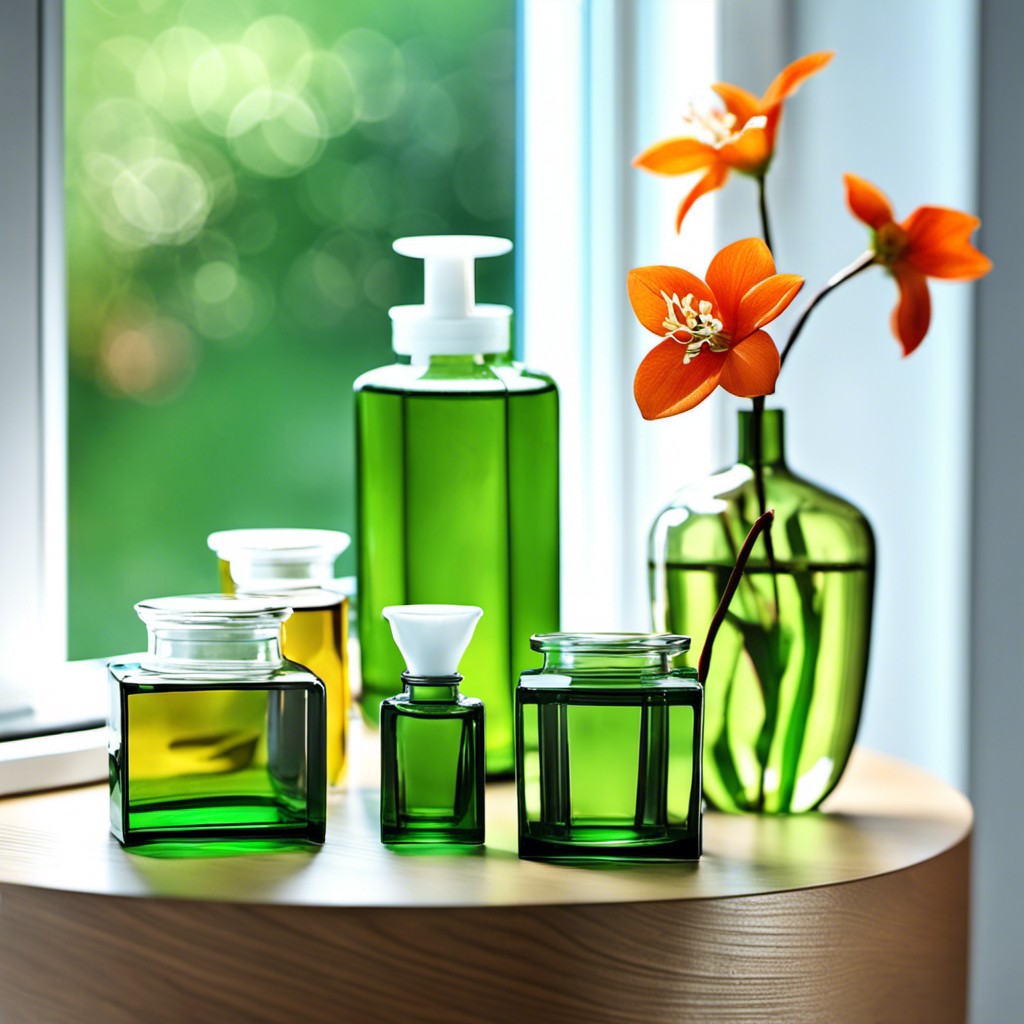
Fortunately, there are many glass alternatives that won’t break the bank. One of the most popular and affordable options is acrylic glass.
Acrylic has similar properties to traditional glass but costs much less and is more durable.
Another cost-effective option for those looking for a unique touch in their decor are wooden glasses replacements. These can be made from reclaimed wood or even driftwood found on the beach! They add warmth and texture to any room while also being eco-friendly.
Polycarbonate plastic substitutes are another great choice if you’re looking for something strong yet inexpensive. Polycarbonate sheets have high impact resistance, making them ideal for use in areas where safety may be a concern such as children’s playrooms or outdoor spaces.
Innovation in Glass Substitute Materials

One such material is a transparent aluminum called “aluminum oxynitride,” or ALON for short. This material has been used by the military for years as bulletproof windows on tanks and other vehicles.
ALON is not only strong but also scratch-resistant, making it an excellent alternative to traditional glass in high-traffic areas like airports or shopping malls. Another exciting innovation is “smart glass,” which can change its transparency based on light levels or electrical currents passing through it.
These advancements are just a few examples of how science and engineering are pushing the boundaries of what we thought was possible with substitute materials for glass.
The Future of Glass Alternatives
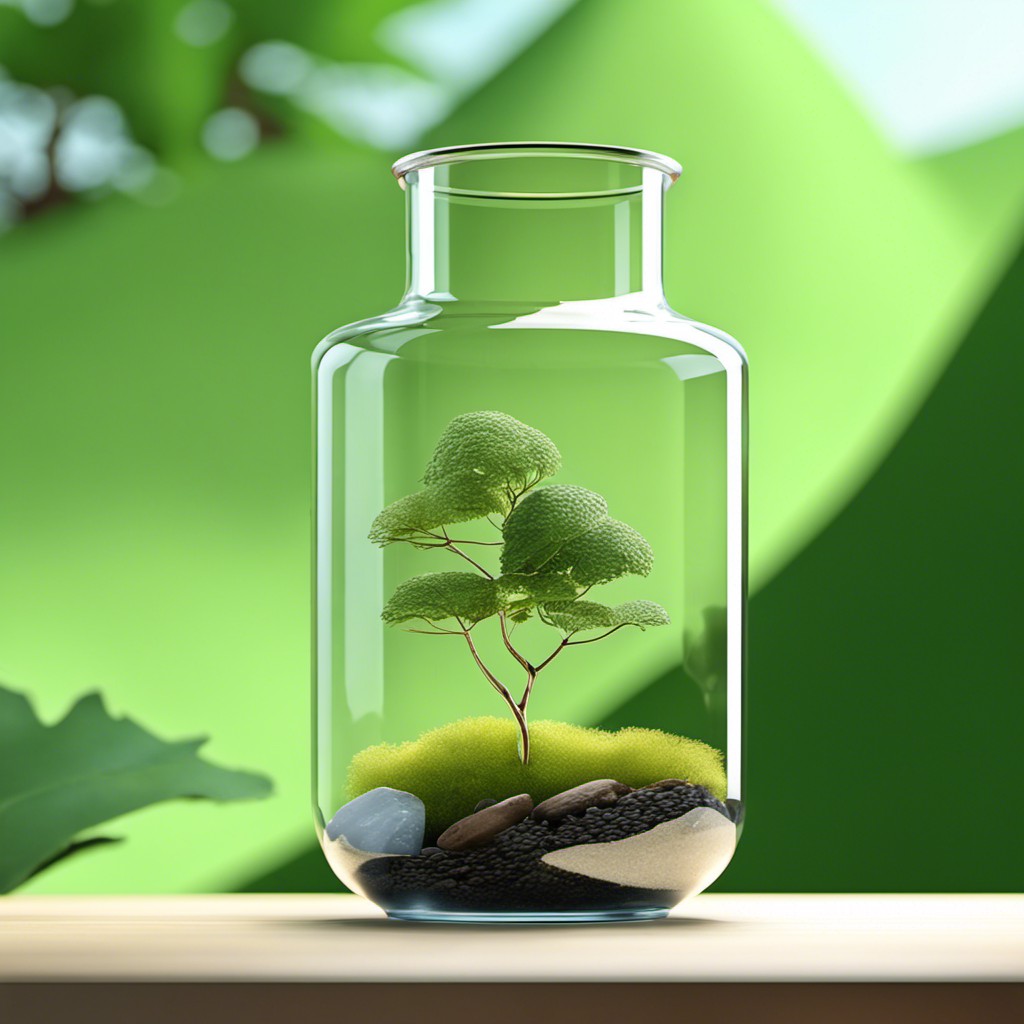
The future of glass substitutes is looking bright as researchers and manufacturers work to create new materials that offer even more benefits than traditional glass.
One area where we’re likely to see significant growth in the use of alternative materials is in construction. Glass has long been a popular choice for windows and other building components, but it can be expensive and difficult to install.
As such, architects are increasingly turning towards innovative solutions like polycarbonate or ceramic-based products.
Another area where we may see increased adoption of alternative materials is in food packaging. With concerns about plastic waste growing around the world, companies are exploring new ways to package their products without relying on traditional plastics or fragile glass containers.
Environmental considerations will undoubtedly play an important role in shaping the future landscape for these types of products. Consumers today demand eco-friendly options that minimize waste while still providing high-quality performance characteristics – something which many newer alternatives excel at delivering.
Overall then, whether you’re interested in home decor or industrial applications alike; there’s no doubt that this field holds great promise for those willing enough take advantage!.
FAQ
What would be used instead of glass?
Acrylic and polycarbonate are common alternatives to glass, with acrylic being relatively inexpensive and having desirable optical properties, and polycarbonate being lightweight and impact resistant.
What is a sustainable alternative to glass?
A sustainable alternative to glass is transparent wood, which is lighter in weight, has similar strength to regular wood, and is more eco-friendly compared to plastics.
What material looks like glass but isn t?
Acrylic sheets look like glass but are not glass, as they are a different transparent material with unique properties and characteristics.
What is a cheap alternative for glass wall?
A cheap alternative for a glass wall is plexiglass, which is a transparent plastic material made from polymethylmethacrylate (PMMA) and also known as acrylic, acrylic glass, or perspex.
What are the environmental benefits of using glass alternatives in construction?
Glass alternatives in construction offer environmental benefits such as reduced energy consumption, lower greenhouse gas emissions, and decreased reliance on nonrenewable resources.
How do the durability and strength of glass alternatives compare to traditional glass?
In general, glass alternatives tend to be more durable and stronger than traditional glass.
Are there any innovative glass alternative technologies being developed for use in consumer products?
Yes, innovative glass alternative technologies, such as transparent aluminum and Willow Glass, are being developed for use in consumer products.
Recap
Liked this article? Here's what you can read next:
